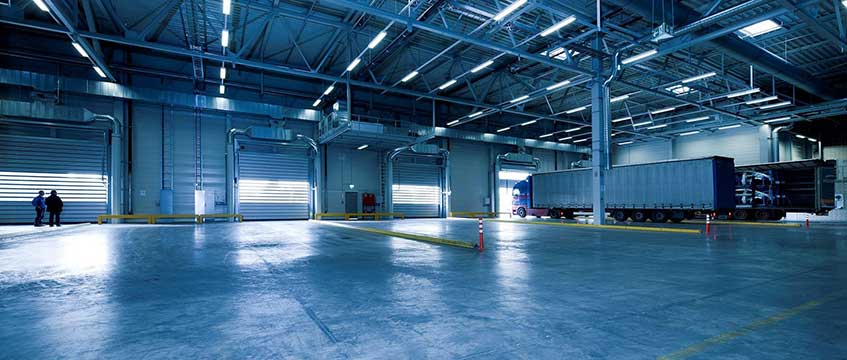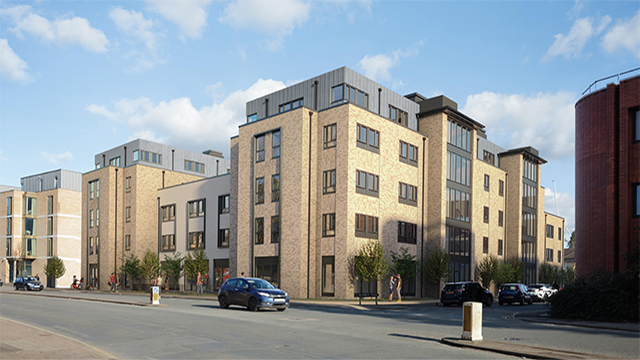Why we can’t afford to leave London’s logistics behind
COMMENT Levelling up has become part of the UK lexicon. The government’s push to boost economic growth, improve living standards and drive cultural and social initiatives in less affluent regions has been ongoing for more than five years, as our leaders strive to spread opportunity equally across the country. But does this risk drawing attention away from much-needed investment in London’s own infrastructure?
With low productivity stunting growth and economic recovery in the UK, it is vital that the government continues to prioritise its levelling-up agenda. But it is not just deprived regions that need attention; we need to improve the entire country, including our capital, if we want to drive economic activity and foster innovation.
The industrial and logistics sector is central to our economy, employing 2.8m people and generating £232bn of gross value added, which equates to a 14% share of the total UK economy. Logistics has a crucial role to play in supporting upskilling, job creation and infrastructure. While this is important in areas of the country with fewer opportunities, it is also true of London.
COMMENT Levelling up has become part of the UK lexicon. The government’s push to boost economic growth, improve living standards and drive cultural and social initiatives in less affluent regions has been ongoing for more than five years, as our leaders strive to spread opportunity equally across the country. But does this risk drawing attention away from much-needed investment in London’s own infrastructure?
With low productivity stunting growth and economic recovery in the UK, it is vital that the government continues to prioritise its levelling-up agenda. But it is not just deprived regions that need attention; we need to improve the entire country, including our capital, if we want to drive economic activity and foster innovation.
The industrial and logistics sector is central to our economy, employing 2.8m people and generating £232bn of gross value added, which equates to a 14% share of the total UK economy. Logistics has a crucial role to play in supporting upskilling, job creation and infrastructure. While this is important in areas of the country with fewer opportunities, it is also true of London.
Competitive edge
As the beating heart of our financial system, London needs to support high levels of commercial and industrial activity, and real estate is central to facilitating this. The city sustains itself on a complex web of space for living, working, manufacturing, logistics and leisure. Industrial and logistics property is a crucial part of this, but the space currently available is not sufficient to support economic and population growth.
If London is to be a key city of the future, it will require investment in logistics space that is fit for purpose. The capital’s population rose past 9m for the first time in 2020, heightening pressure on its services. We need more industrial and logistics facilities to satisfy the rising demand for consumer goods and business services, including, for example, data storage capacity. Without this, the city risks losing its competitive edge. Yet logistics real estate has been eroded over the past two decades; according to New London Architecture, 24% of industrial floor space in London has been lost to other uses, predominantly housing.
Modernisation of supply chains, ever-compressing delivery times, a shift to UK-based manufacturing and the boom in e-commerce are key drivers behind the rising demand for logistics space in London. The upshot of this is a need for highly specified, modern warehouses in optimal locations with easy, sustainable access to central London.
Flexibility is also key. Consumer patterns change rapidly, meaning that logistics space needs to be adaptable. Reworking existing buildings and reimagining the traditional warehouse typology are tools that the industry needs to look towards if it is to keep pace with a modern society. Co-location forms part of this – with land costs remaining high in the capital, there is a need to accommodate maximum use in less space, relying on technologies and space-saving, design-led layouts which maximise efficiency and often combine logistics facilities with other uses. As the industry continues to decarbonise, the potential for increased vertical and horizontal co-location will increase accordingly.
Overcoming barriers
The population can be hesitant to support the provision of new urban industrial space, as logistics parks and premises are not traditionally seen as good neighbours. This causes blockages for local authorities in approving the space for use. But logistics parks of the future are very different from those of the past. Sustainability and harmony with the surrounding environment are important considerations in new developments. Renewable energy sources, EV charging points and landscaped green expanses which support biodiversity and provide public space for recreation and wellbeing are all common features. Diverse job creation and social value delivery should also be factored in as important considerations for local communities and decision-makers.
Then there is the issue of power supply. Logistics is traditionally an energy-intensive industry, requiring power for lighting, technology and distribution. However, recent advances in PV installations in logistics parks put the industry in a position to be a real clean energy generator, rather than a drain on resources. Data from the United Kingdom Warehousing Association shows that the industrial and logistics sector alone could meet the UK’s 2025 carbon reduction targets if all available roof space was fitted with PV infrastructure. Developers such as GLP are capitalising on this, offering clean energy solutions which benefit both customers and the environment.
With the right type of space – modern, strategically located, sustainable – London can fully tap the booming demand for logistics solutions. This has the potential to drive economic growth, boost productivity, support job creation and promote innovative infrastructure solutions such as clean energy, setting a prototype that can be rolled out across the UK as the government continues its levelling-up agenda. The opportunity set here is huge. But without significant support and investment into our capital’s logistics space, we may miss the chance to cement the city’s competitive edge in an ever-modernising world.
Gwyn Stubbings is senior planning director at GLP Europe
Photo © Pixabay/Pexels











